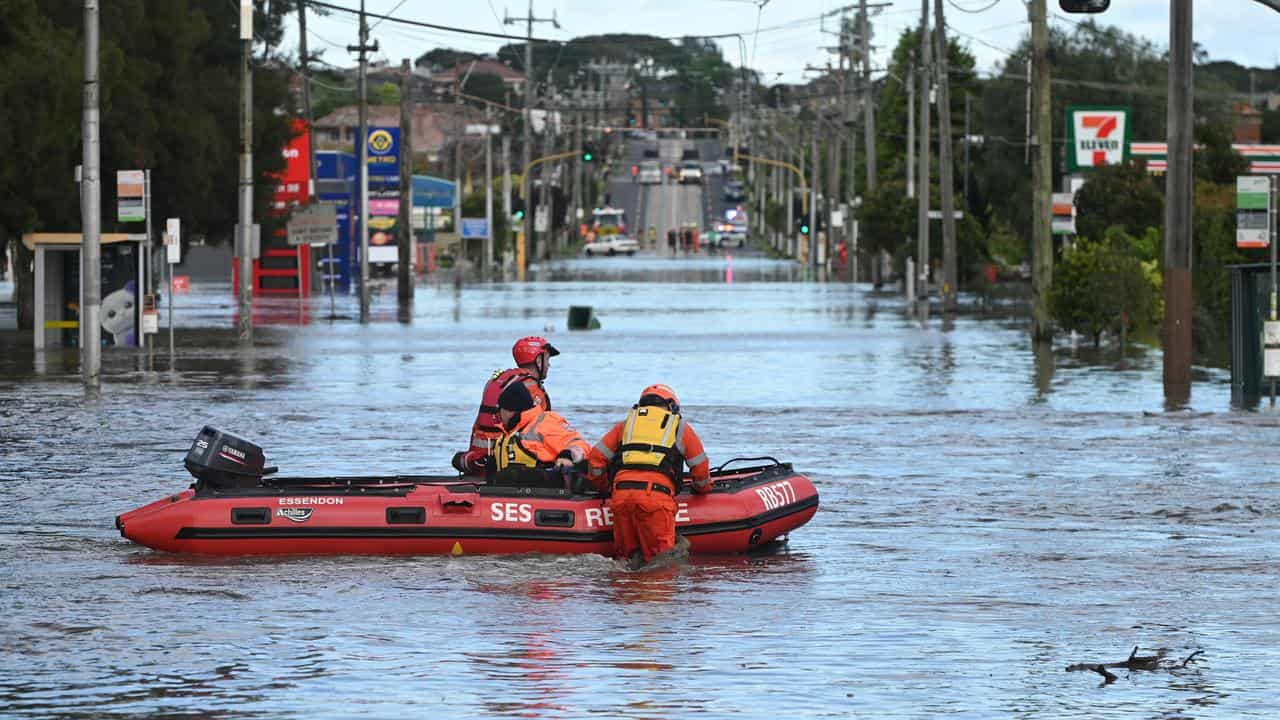
Regional Victoria had to contend with wildly fluctuating advice leading up to the October 2022 floods as warnings failed to take into account local information, a mayor says.
Leaders from four councils appeared before a state parliamentary inquiry into the disaster on Tuesday to also detail ongoing funding shortfalls for infrastructure repairs.
Buloke Shire Council Mayor Alan Getley said his area's early warning system in the lead-up to the floods appeared to be ad hoc, informal and inconsistent with what was happening on the ground.
The result was wildly fluctuating advice in the week prior to the event, Mr Getley said.
"We had information from farmers in our area that they'd had 103 millimetres of rain in an hour ... but that water was never factored in," he told the inquiry.
"(Authorities were saying), 'we're going to have a six-metre flood', but all of a sudden it turned around and ... we've got an eight-metre flood because where has this water come from?
"We couldn't get that water factored into the (Bureau of Meteorology) and the emergency people because they just weren't listening."
Mr Getley suggested the bureau take farmers' real-time rainfall monitoring information into account given its own coverage wasn't all-encompassing and many farmers had accurate rainfall gauges.
He said the VicEmergency app was customer focused and not detailed enough for councils to use effectively in their emergency response.
In other evidence, Buloke Shire Council estimated the cost of its essential road rebuild was at least $32 million, of which about $11 million was funded.
Pyrenees Shire Council was facing a minimum $8 million bill with about $1.5 million funded through grants, while Moira Shire Council had an estimated $17 million infrastructure bill.
Additionally, Moira’s agricultural sector was estimated to have a $75 million production loss in 2022 because of the flood event, council administrator Graeme Emonson said.
The inquiry was told Mildura Rural City Council was grappling with an infrastructure rebuild cost of about $18 million, of which about $4 million was funded.
Council leaders pointed to administrative demands as obstacles to accessing disaster recovery funds, including a requirement to have photographs of every 500 metres to prove what infrastructure was lost.
Pyrenees Shire Council suggested the state government either appoint a contractor to routinely photograph infrastructure, or give councils money to dedicate time to doing it themselves.

The council leaders highlighted the flood also had ongoing ramifications for their communities' health and wellbeing, with Mildura mayor Liam Wood pointing to mosquito outbreaks and multiple residents' deaths from Japanese encephalitis.
"This issue's only happening now from a flood that happened (a year ago)," Cr Wood told the inquiry.
The parliamentary inquiry into the disaster, which left hundreds of homes across Victoria inundated, will also look into a controversial wall built around Melbourne's Flemington Racecourse.
The Victoria Racing Club, Melbourne Water and the Maribyrnong City Council are scheduled to appear on Wednesday.
Homes and infrastructure were damaged, but the grounds of the Melbourne Cup track remained clear when the Maribyrnong broke its banks thanks to the 2.5-metre wall built in 2007.
A previous independent review into the floods found it was unclear how the racecourse levee contributed to the devastation of the neighbouring areas.









